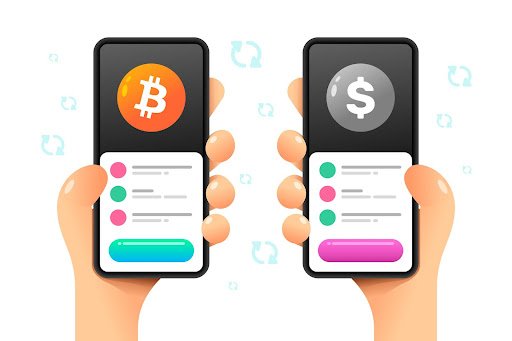Table of Contents
- Custodial Wallets
- Non-Custodial Cold Wallets
- Non-Custodial Hot Wallets
- Paper Wallets
- The Best Way To Store Crypto
When it comes to owning cryptocurrency, one of the most important aspects to consider is exactly how you intend to store those digital assets. Protecting your crypto is a critical responsibility, and all of the onus is on the owner because digital money is not the same as fiat. Because it’s decentralized and not stored in a bank account, anyone who loses access to their funds or falls victim to a fraudster is unlikely to get their money back.
Losing access to crypto is a surprisingly common problem. Indeed, one study by Chainalysis estimated that Bitcoin users have lost access to more than 3.7 million BTC since it was launched in 2009. Due to Bitcoin’s strong cryptography, it’s highly unlikely that anyone will ever be able to recover those lost coins.
The good news is that crypto owners have lots of different options at their disposal, with various hardware and software-based wallets, and even a simple piece of paper. It’s a good idea to understand what those various options are, so keep reading to understand more.
Custodial Wallets
For most new crypto users the custodial wallet is the first kind of crypto storage that they’ll come across. The vast majority of cryptocurrency exchanges, including Binance and Kraken, offer custodial wallets, which means that a third-party control the private keys, and therefore decides who can access the funds within it.
New users generally purchase their crypto from an exchange, and the coins they buy are usually deposited directly into their custodial wallet. From there, users generally have the option to transfer those funds into their own, non-custodial wallet if they desire. Alternatively, there are also private custodial wallet services such as Cwallet that are not linked to any exchange.
Custodial wallets do have a number of advantages over their non-custodial brethren, with the biggest being that they’re the simplest to use. Because it’s controlled by a third party, there’s no need for the user to write down and remember the all-important seed phrase. What’s more, if the user forgets their login details for the associated exchange or wallet, they can easily restore access by resetting their password. Moreover, because most custodial wallets are directly linked to an exchange, it’s possible to trade the crypto within seconds, making it very convenient.
Most investors who use custodial wallets do so precisely for the level of convenience they afford. However, many cryptocurrency users avoid using custodial wallets due to the lack of control. Because third-party controls the keys, users are entirely dependent on them. The risk is that they could, potentially, be refused access to their funds. This is not a small risk, as the recent collapse of the once-popular FTX exchange showed, when it abruptly canceled user withdrawals and filed for bankruptcy, owning millions of dollars worth of crypto.
Non-Custodial Cold Wallets
The alternative to custodial wallets is non-custodial wallets, which come in a range of different flavors. Many cryptocurrency users consider “cold wallets” to be one of the most secure options. Such wallets are usually hardware-based, and allow users to keep their funds offline.
Hardware-based cold wallets are small devices, similar to a USB drive, that can be connected to a PC when the user needs to access it. When the device is disconnected from a PC, there’s no way to access the funds stored on it, meaning they can never be stolen by hackers.
Some of the most popular hardware wallets include Ledger, Trezor, and Ellipal, which support multiple types of cryptocurrency. When the wallet is connected to a PC, the user can generate a unique address to receive funds, or send coins to another address. The hardware wallet has its own, unique recovery phase, or recovery seed, which allows users to reclaim their assets in the event that they lose the actual device. Obviously, this seed phrase needs to be stored somewhere safe, so it doesn’t fall into the wrong hands.
Such cold wallets are generally used to store larger amounts of cryptocurrency due to their higher security. The biggest downside is that they’re not always easy to use, and they’re certainly not as convenient as other options due to the need to plug the device into a PC each time you want to access it.
Non-Custodial Hot Wallets
The most commonly used kind of crypto wallet is the non-custodial hot wallet, which can take the form of a mobile or desktop app or even a browser plugin. There are countless options to choose from, with some of the most popular including Coinomi, Coinbase Wallet, MetaMask, Exodus, and Electrum.
The advantages of non-custodial hot wallets are numerous, with one of the main ones being that users remain in full control of their digital assets. The vast majority of non-custodial hot wallets are free to download and use, and some of the most capable also provide additional services such as being able to swap or exchange tokens directly in the app, access DeFi and link the funds within it to a debit card.
With hot wallets, no one else has access to the funds within it, so it’s impossible for users to be censored in any way. Smartphone-based hot wallets are also extremely convenient as they can be carried anywhere and used for payments or to receive funds on the go.
As with hardware-based wallets, hot wallets require users to safely store their seed phrase. In the event that the user loses their smartphone, for example, they can download the same app on another device and recover their account.
The biggest drawback to hot wallets is that they’re always online, meaning there is a low risk that they could be hacked. Though it’s not possible for crypto to be hacked in the traditional sense, many crypto users have fallen victim to scams and phishing attacks, where hackers trick them into giving up their seed phrase before clearing out their funds.
The chances of this happening are fairly minimal, but it’s still a risk. Thankfully, a new generation of crypto wallets such as Klever Wallet K5 negates this risk once and for all. Unlike most other hot wallets, Klever Wallet supports both hot and cold storage via its KleverSafe device that’s sold separately. The KleveSafe hardware can be carried anywhere and connected to any mobile device and instantly linked to KleverWallet at any time, enabling users to access their cold-stored funds from anywhere and manage them efficiently. In this way, it’s possible to access a cold wallet on the go, with all the advantages of a hot wallet.
Paper Wallets
Last but not least is the so-called paper wallet, which is quite literally just a piece of paper that’s - obviously - disconnected from the internet. A paper wallet is really just a printout of the user’s public and private keys, which are needed to access their funds. The keys are represented by a string of random characters and a QR code for convenient scanning.
To receive funds using a paper wallet, all the user has to do is share their public key (wallet address). Meanwhile, to send funds, they need to scan both the public and private keys using a device, then add the transaction details.
The advantage of paper wallets is similar to that of cold wallets. Because they’re offline, they provide greater security for users. There are numerous services available for users to create paper wallets, including Bitcoin.com’s paper wallet generator, WalletGenerator.net, and PaperWalletBitcoin.
Paper wallets are arguably superior to hardware wallets because there’s no need to store a device. In addition, hardware wallet users must also write down and store their private keys on a piece of paper anyway. However, paper wallets are also the least user-friendly way of storing crypto, as the process of creating one involves several steps.
The Best Way To Store Crypto
Experienced crypto users generally recommend using a combination of different wallets to store your digital assets. The bulk of your funds should be stored using a cold wallet or paper wallet, as these are the most secure methods. Smaller amounts can be stored within a hot wallet on your smartphone for day-to-day use, such as trading crypto, making regular payments, or interacting with DeFi. Alternatively, users can also store smaller amounts in a custodial wallet on an exchange if they intend to trade regularly.
The key to storing your crypto safely is to ensure that you physically record the recovery phrases for each crypto wallet that you use, no matter what the type. Write the seed phrase down on a piece of paper and store it securely somewhere that only you can access, such as a safe. Finally, remember that you should never share this seed phrase with anyone, not even someone who claims to be representing the wallet provider - this is a common scam, and a reputable crypto wallet firm will never ask for these details.
Disclaimer: This article is provided for informational purposes only. It is not offered or intended to be used as legal, tax, investment, financial, or other advice.
Investment Disclaimer













